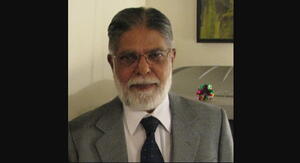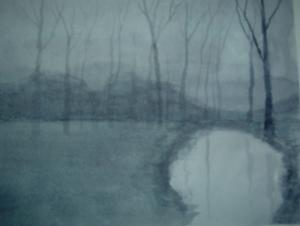Who says science doesn't fuse with poetry?
He is one of the senior scientists at the Institute for Plasma Research in Bhat, Gandhinagar, where he occupies the Meghnad Saha Chair in Plasma Science and Technology. He has authored and co-authored numerous scientific articles, and he has written a book entitled "Plasma Sciences and the Creation of Wealth."
Pucadyil Ittoop John is also one of the four representatives from India on the ITER Council, the project's governing body. He was also instrumental in India joining the ITER Project: "We felt we should be part of the very project that would make fusion energy become reality," says P.I. John.
It was for a lifetime of contribution to science that on 26 January this year, the day when India celebrates becoming a republic, he was awarded the Padma Shri, one of the most prestigious awards given by the Indian Government to citizens in recognition of their distinguished contribution to society. Talking about Professor P.I. John and his outstanding scientific career would fill many pages. But what makes this physicist with his distinctive look and his distinct affection for the American singer Joan Baez so outstanding is his passion for poetry and painting. On his blogs he publishes romantic paintings and poems on Minerva's children and Moore's law, on Point Loma and even an Ode to ITER ("...in the rocky wilderness of Cadarache..."). "Science, like art, is a form of expression," he says. "The attempt in both is to find the truth."
After playing a leading role in building up the organizational structure of ITER India, Dr John has now taken a lead to develop the idea of a national fusion program. "With India's entry into ITER, a human resource base for future requirements of trained manpower in fusion science and technology is needed," he says. "I am currently working on an administrative framework for funding universities and educational institutions in basic research, and human resource development in fusion science and technology."
As if all this was not yet enough to keep an officially retired man busy, perhaps Prof John's most beloved baby is the Facilitation Center for Industrial Plasma Technology. An institution that forms a bridge to industry, as Professor John explains it, something similar to the Culham Innovation Centre. "Industry is not aware of what plasma science can do for them," P.I. John says. So he and his team have engaged themselves into research on plasma nitriding processes to harden steel surfaces, a process that today finds its application in machining and the automobile industry.
Another example of how the abstract world of plasma physics has helped to solve very earthly problems is a project on destruction of medical waste using plasma torches. The treatment of hazardous waste stemming from hospitals or chemical plants is a cause of growing concern in India, Professor John tells us. "Most of this waste cannot just be burned because of its toxic by-products. The solution to the problem is called plasma pyrolysis for waste treatment which, for nonmedical organic waste, not only gets rid of the waste, but produces energy out of it."
Prof. John gave the name of "Shiva's third Eye" to the torch. Shiva is the head of the Hindu pantheon and is depicted with a third eye, capable of destroying anything. Science, remember, like art is a form of expression.



